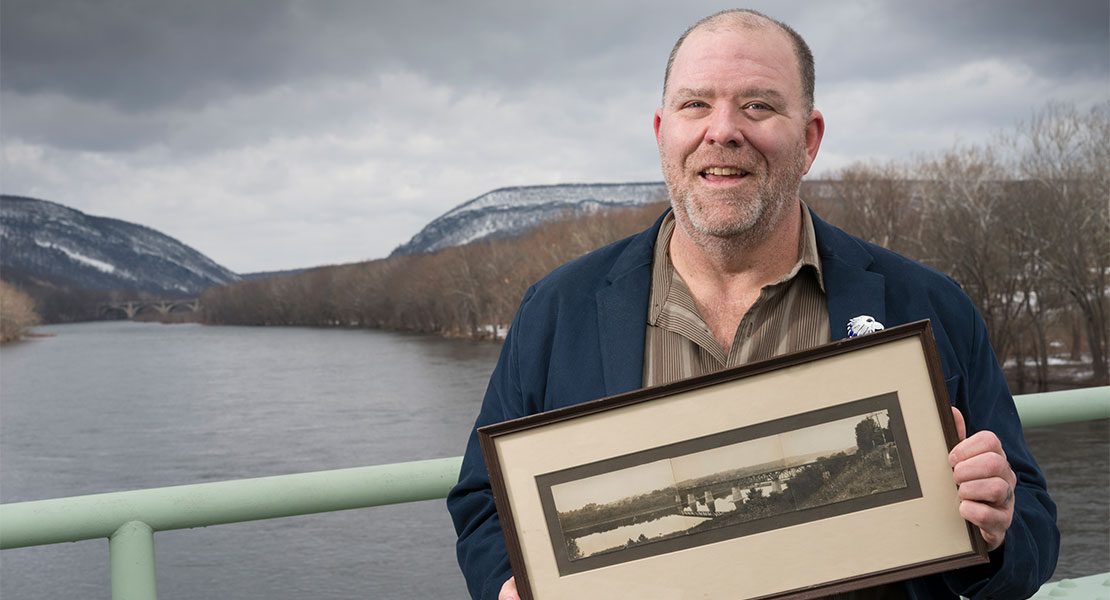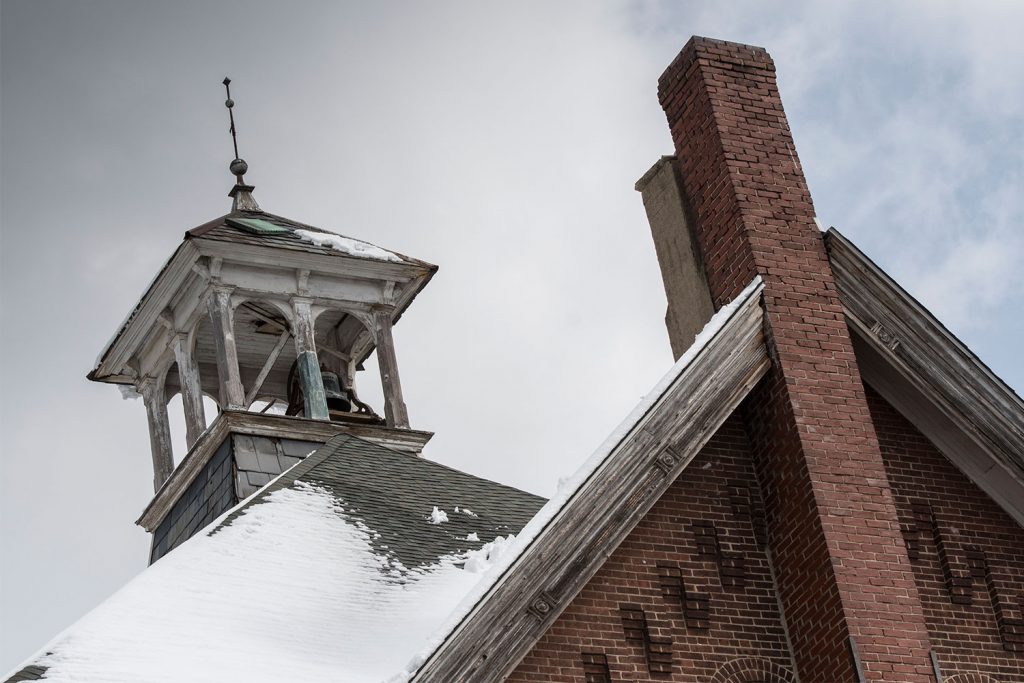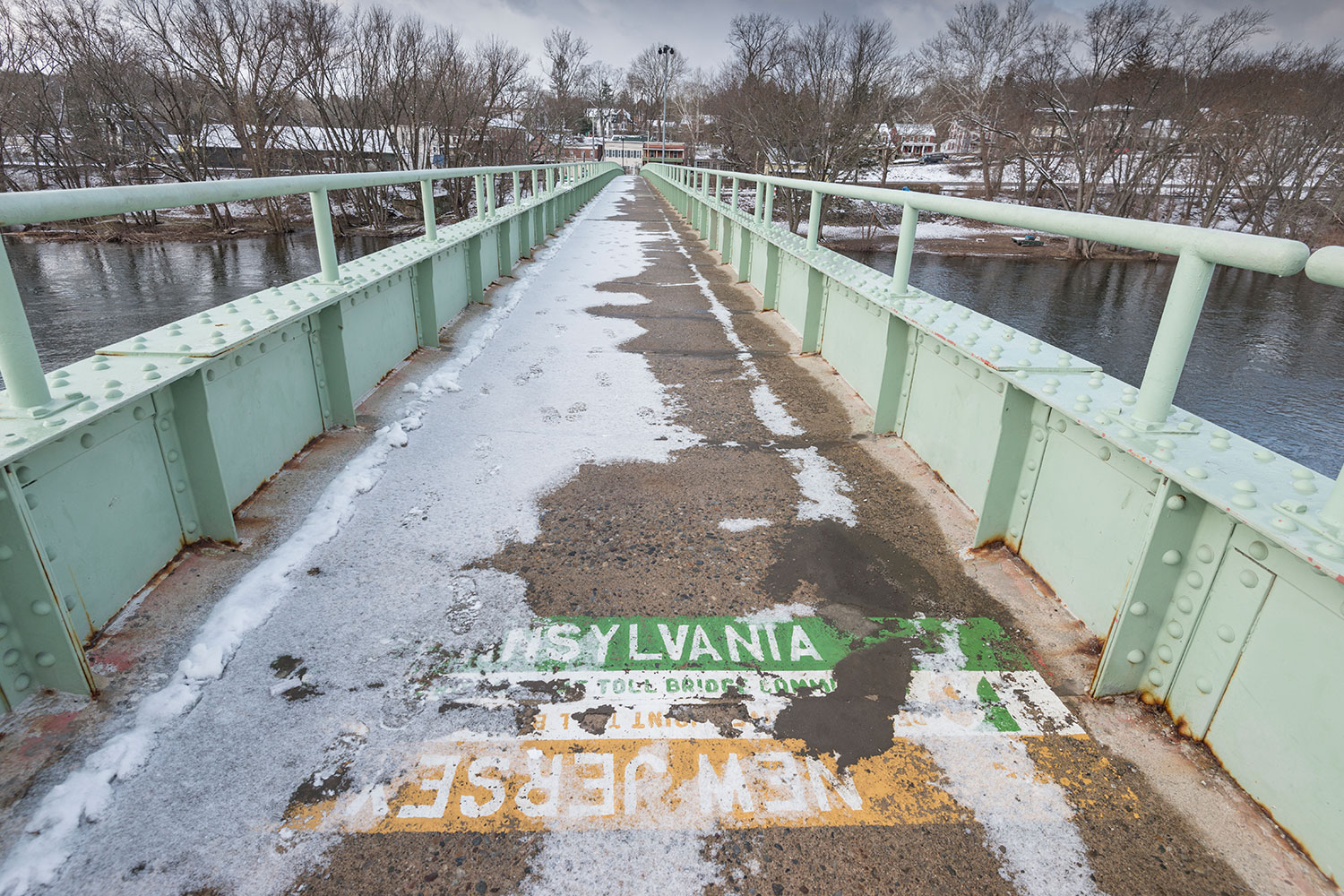Portland

40°55’14″N 75°5’52″W
COUNTY: NORTHAMPTON
ZIP CODE: 18351
POPULATION: ~ 519
About 20 miles north of Easton along the alluvial plains of Route 611, the terrain suddenly dips and with it comes the beautiful Delaware River. Settled in the early part of the 18th century to support the country’s expanding industry, a pair of bridges bear the name of the humble borough. This is Portland.
Built around the logging and slate trades in the late 1700s, folks used a ferry to move lumber and other materials to New Jersey and beyond. A great covered bridge, the longest in the country at the time (775′), made travel and the exchange of goods and services between Pennsylvania and New Jersey easier.
Stately Victorian homes with gingerbread cornices, built in the 1870s, share the streets with rows of Cape Cods from the 1950s and century-old structures provide a clear sense of their original purpose.
Today, primarily a summer town, Portland sleeps through the winter and its 500 or so residents patiently bide their time until the weather warms. “It’s a nice quiet place,” says town historian Walter Emery, a fourth-generation Portlander and a retired teacher.

Mayor Lance Prator says things liven up in the spring and summer when events like Sundae Sundays, picnics and parades bring the community together. Warmer weather also brings visitors, thousands of them, drifting down the Delaware on kayaks, boats, and inner tubes.
Over the past 200 years, historic floods have challenged the town from an advancing and retreating river. Its resilient population has adapted by making their homes along streets in the town’s western village. Since taking office in 2011 Prator has worked to make improvements, but finding a way to protect the town against flooding is beyond his fortitude. “The flood that destroyed the covered bridge in 1955 was not the first or last, and a series of them from 2004-2006, proved to be a lot for us to handle,” he says.
Despite Portland’s challenges, Frederick Duckloe & Brothers, founded in 1859, continues to create meaningful work here. Folks who know the Duckloes say their continued success is because their showroom and factory are so deeply rooted here. Customers who know the brand say it’s because they produce some of the best furniture made anywhere in the world here.
Over time, they have experienced the evolution of manufacturing right here in our own backyard. As part of their legacy to American craftsmanship, the Duckloes have strived to overcome the challenges of mechanization and preserving the quality of materials and standards. “As we continue to receive furniture commitments from noteworthy American institutions and customers from around the world, we like to think we’ve met that challenge,” says Duckloe. Aside from its peaceful beauty and history, go to Portland to buy a piece of American made history.

See, Do & Play
Long ago, the borough had its own high school. It was closed in 1969 and today it’s Portland Town Hall. Rumors around town insist the ghost of the last principal still lingers.
206 Division Street. 570-897-0559.
The old town hall, a tiny white one-room wooden building, is called The Portland Pokey, for the single antiquated jail cell under the common hall. Town historian Walter Emery is happy to give visitors an informational tour.
106 Main Street. 570-897-0559.
Frederick Duckloe & Bros. is a third-generation furniture maker offering a vast array of home furnishings specializing in Windsor-style 18th-century chairs, stools, and benches. They maintain production of historically important examples of timelessly beautiful American classic furniture, but are also mindful of their role as a design-driven organization. They continue to work on developing and introducing new lines that reflect evolving uses of residential furniture and the sophistication of consumers who are exposed to good design.
513 Delaware Avenue. 570-897-6172.
The Portland-Columbia Bridge is how motorists cross the Delaware River into New Jersey, but the Pedestrian Bridge, where the old covered bridge once stood, is more appropriate for the hiking crowd. The bridge is a recent addition to the Liberty-Water Gap Trail, a collection of hiking paths joined to stretch 150 miles from Delaware Water Gap through New Jersey all the way to Liberty State Park, from which one can view Liberty Island and the Hudson River.
PA Bagel & Deli opens before dawn seven days a week. This is the place for early risers to get their coffee, breakfast, or treat friends to lunch.
398 North Delaware Avenue. 570-897-6611.
O’Neill’s Place caters to lunch and dinner crowds. The large dining room includes a bar, pool table, and floor space for quoits.
104 Main Street. 570-897-5590.

Timeline
1810 – Columbia, located just across the river, opened a glassworks and various saw and grist mills along Jacoby Creek to support the growing town.
1847 – A local newspaper, The Portland Enterprise, was started by L.G. Raymond to inform residents on both sides of the river.
1869 – The Columbia, NJ-Portland, PA Bridge was built. It was converted to a footbridge in 1953, but unfortunately destroyed by Hurricane Diane in the great flood of August 1955. It was replaced by a pedestrian crossing, which bears a plaque honoring its ancestor.
1876 – The railroad arrived and the population became sufficient enough to incorporate a borough.
1903 – The Portland National Bank was organized and received its charter and served the population. It closed 1932 with the economic pressures related to the Great Depression.
1950s – A man named Donald Gardner, a Portland native, introduced the country to a classic, longstanding holiday song “All I Want for Christmas is My Two Front Teeth.”
Covered Bridges
The earliest covered bridges in America were built in the late 1700s and early 1800s to provide shelter and, so horses wouldn’t fear crossing water. They were also intended to keep wooden supports dry allowing the structures to last longer. As many as 12,000 covered bridges once existed in the United States which decreased to under 1,500 by the 1950s. Pennsylvania currently has the most covered bridges in the country with 213. Ohio is second and has 148.
The Slate Belt
Although Northeast Pennsylvania is most famous for its once-thriving coal mining industry, it was also known for a mining trade that was equally important in the late 19th century–slate. The largest deposits came from “The Blue Mountains” of upper Northampton County, between the Delaware and Lehigh Rivers. As infrastructure evolved, these materials began shipping all over the country for various applications including blackboards, billiard tables, counter tops and roofing shingles. In its most prosperous times, the Slate Belt employed over 4,000 miners and created incredible value for consumers across the country.
Because You Live Here® introduces readers to a Lehigh Valley geographical point of interest and its history. This offers both lifelong residents and newcomers a chance to discover the hidden treasures our market has to offer.
























